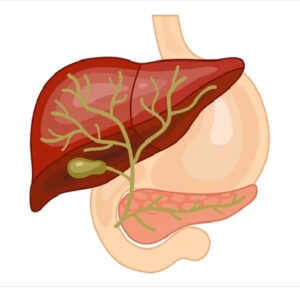Bile duct cancers
Bile duct cancer is also called cholangiocarcinoma.
A network of tubes, called ducts, connects the liver, gallbladder, and small intestine. This network begins in the liver where many small ducts collect bile (a fluid made by the liver to break down fats during digestion). The small ducts come together to form the right and left hepatic ducts, which lead out of the liver. The two ducts join outside the liver and form the common hepatic duct. The cystic duct connects the gallbladder to the common hepatic duct. Bile from the liver passes through the hepatic ducts, common hepatic duct, and cystic duct and is stored in the gallbladder.
When food is being digested, bile stored in the gallbladder is released and passes through the cystic duct to the common bile duct and into the small intestine.

Causes
Cholangiocarcinoma happens when cells in the bile ducts develop changes in their DNA. A cell’s DNA contains the instructions that tell a cell what to do. The changes tell the cells to multiply out of control and form a mass of cells (tumours) that can invade and destroy healthy body tissue. It’s not clear what causes the changes that lead to cholangiocarcinoma.
Symptoms
These and other signs and symptoms may be caused by bile duct cancer or by other conditions. Check with your doctor if you have any of the following:
- jaundice (yellowing of the skin or whites of the eyes)
- dark urine
- clay coloured stool
- pain in the abdomen
- fever
- itchy skin
- nausea and vomiting

